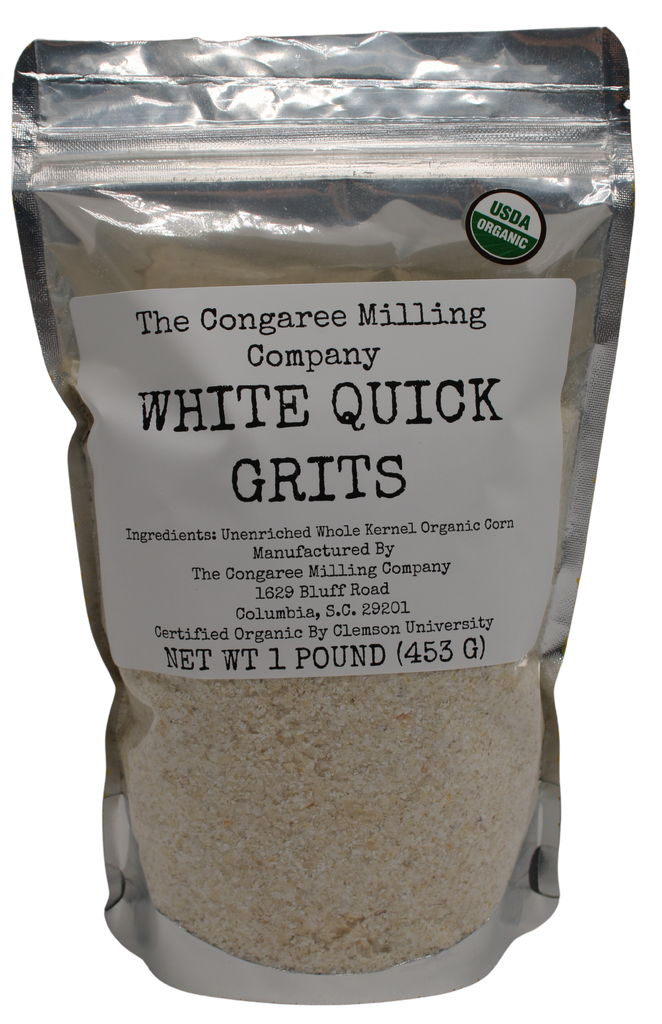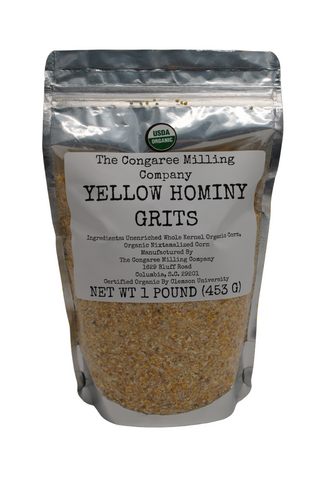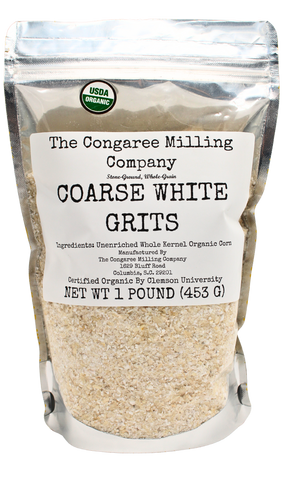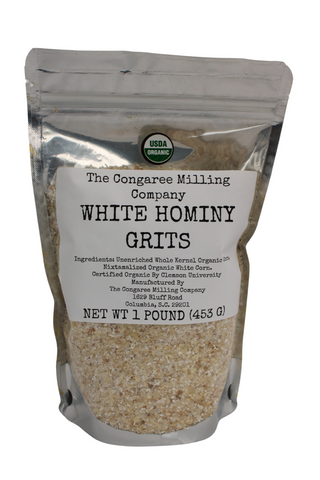White Quick Grits
$ 5.00
Our organic stone-ground White Quick Grits are ground from organic white corn and contain nothing else but organic white corn. These organic quick white corn grits are freshly milled to order and shipped to your door! This is a quality that cannot be achieved with store-bought products. Time is of the essence when it comes to freshly-ground corn flavor.
Our White Quick Grits are milled finer than our Coarse White Grits, and this quality makes them cook in about a half-hour or so (compared to about an hour for Coarse White Grits). These grits are whole-grain, USDA Certified Organic, and milled from domestic corn.
This product is also vegan. It is a GMO-free and gluten-free product.
It is a food very high in resistant starch, which is an underappreciated food in the current nutrition discussions.
Here are some instructions on how to cook grits. Generally speaking, 4 parts liquid to 1 part dry grits works perfectly. Stock of your favorite variety (be it vegetable or animal) and any sort of milk or cream are nice, also. A blend of any or all of these liquids works well. And plain old water works fine, of course.
As for myself, I always cook mine with a bit of salt and then add butter to finish. when the texture of your grits is nice and soft they are done. That is the time you your butter and/or cheese. From there you can take grits in more than a few directions, be it as a starch base for a meal, or even just a healthy whole-grain snack on its own. Microwave left over grits and finish with your favorite sliced cheese for a quick snack.
Grits can be chilled, then cut and fried in any method. I've been enjoying the air fryer as of late.
Want to know more about grits? Read on!
So what exactly are grits? Provided the grits are not specifically rice grits, grits are always ground up corn (Zea Mays). They are ground from dry field corn (not the sweet corn you eat on the cob during summertime). Field corn stays in the field until the kernels are dry enough to store without getting moldy (under 15.5% moisture content). Although field corn goes through the "milk stage" that sweet corn is harvested at, it's not sweet--it's starchy. Nixtamalized corn is also field corn.
Gerard Paul at manyeats.com wrote a thorough but concise article about corn that covers the topic quite well. Please give it a read here.
"Stone ground" refers to the mill the corn is ground up with. That means the corn was ground on a stone burr mill. Offhand, I can think of four different kinds of mills: stone burr, hammer, roller, and flail mills are all used to grind a variety of grain. Stone-ground products are ground on a stone burr mill. A stone burr mill is not required to mill grits, but they would not be stone-ground without the stone-burr mill.
"Stone burr" simply means that the grinding part of the mill is made from stone, i.e., rocks (although some manufacturers use synthetic stones in their mills). These millstones must be made of hard, durable rock such as Balfour granite. "Burr" refers to the carvings on the grinding side of the millstones, A flat stone is not as good at grinding as a stone that has been shaped with a pattern to assist in grinding grain (referred to as "grist" by millers). This pattern is referred to as "lands" and "furrows." Lands are the high spots, and furrows are the low spots. These shapes interact to cut the grain into uniform sizes.
Millstones may be arranged in a horizontal or vertical fashion. One of the stones called the "runner stone" spins. One stone is stationary: the "bedstone" or "set stone."
Modern stone burr mills are generally powered by electricity, but old-fashioned water-turned mills still count as stone mills (generally speaking), as do the even more primitive horse-powered mills, or even windmills. For that matter, human turned querns count also. As long as the grinding part of the mill is comprised of stone, the product being milled is stone ground.
To summarize: stone ground grits are corn that has been ground on a stone burr mill.
At the Congaree Milling Company, we are proud members of the SCSFA.
What is a gristmill? Check out an article I wrote about the topic here.
Check out this list of gristmills compiled by author Amy Halloran (thank you Amy!).
Here is a list of gristmills in South Carolina graciously compiled by SCIWAY.net. A very special thanks to Kerri.





Share this item: